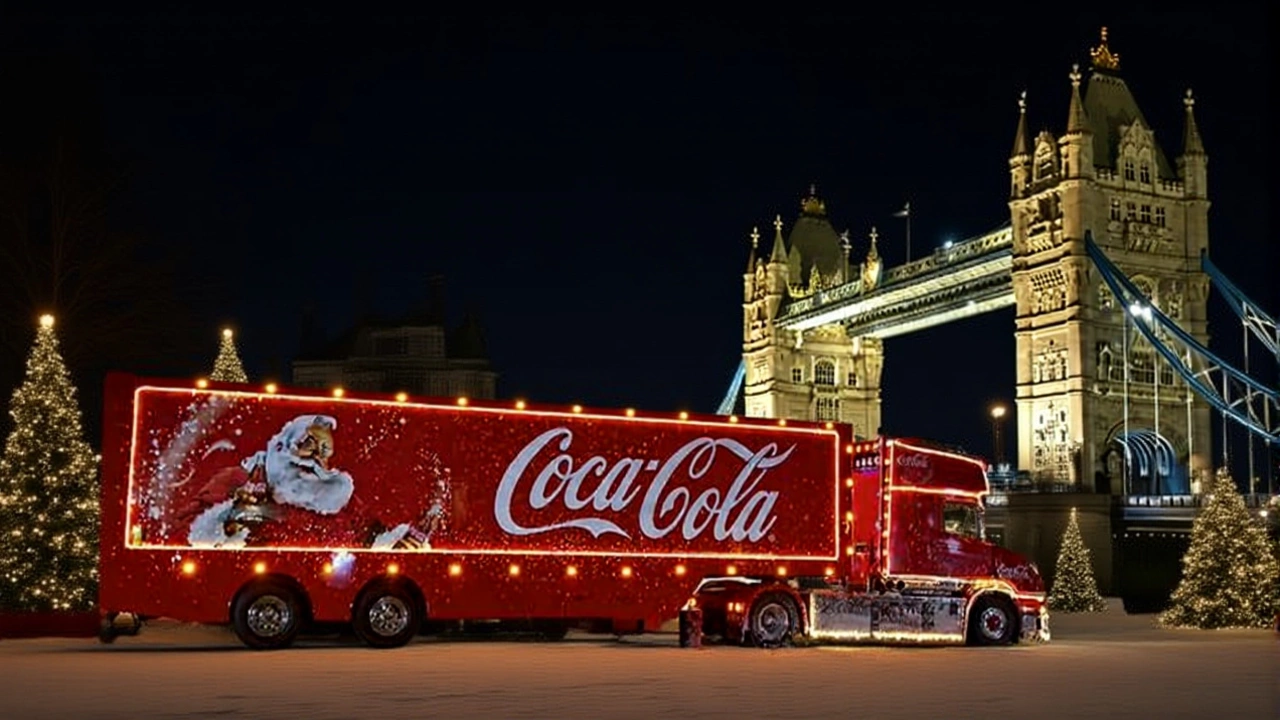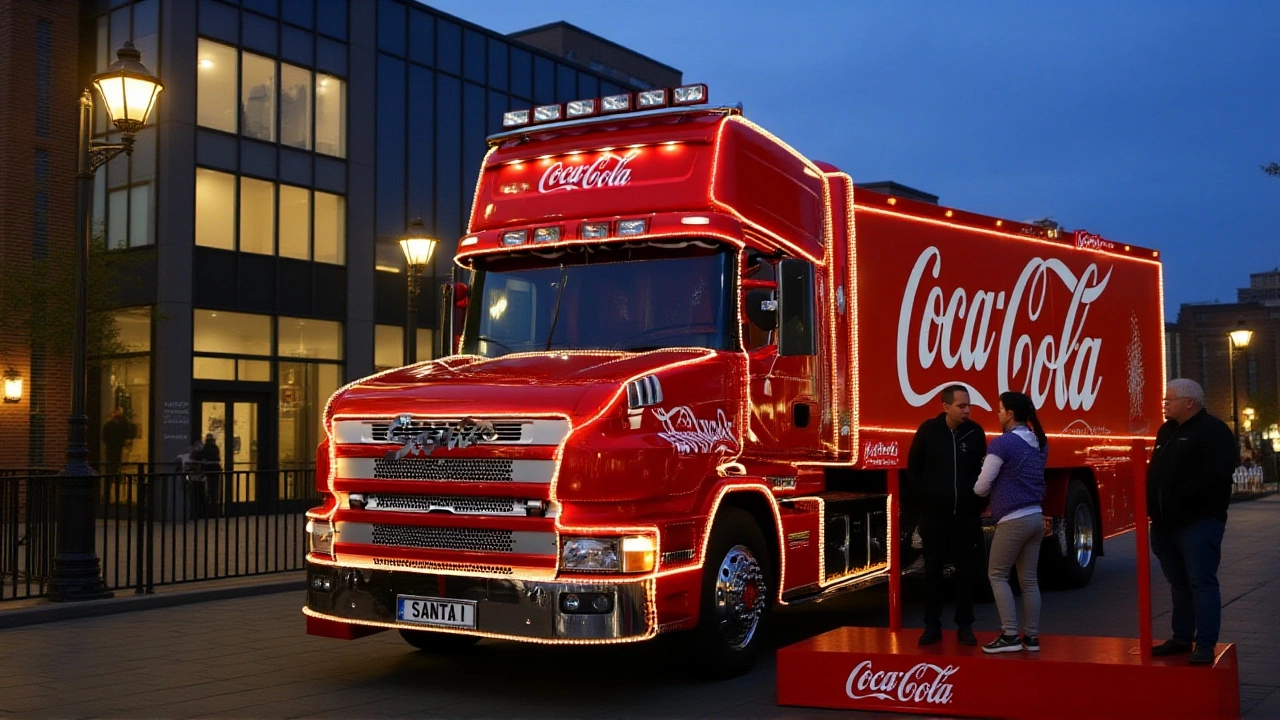The iconic red Coca-Cola Christmas Truck rolled into Glasgow on Friday, November 24, 2023, marking the start of its 29th annual tour across the UK and Ireland. At Silverburn Shopping Centre, families gathered under twinkling lights, snapping photos with the truck and breathing in the crisp scent of pine and peppermint. For many, the truck’s arrival isn’t just a marketing stunt—it’s the unofficial start of the holidays. This year, Coca-Cola European Partners has added a twist: for the first time ever, tickets are required at select stops, including Dublin and Belfast, priced at €3.14 (about £2.75). The move signals a shift from open-access festivity to a more curated experience—though the magic hasn’t faded. It’s still the same truck, still the same carols, still the same snow-filled bauble where kids laugh as fake snow swirls around them. But now, there’s a line.
Where the Truck Will Go—and Why It Matters
The 2023 tour hits 17 locations, eight of which are new compared to last year’s route. Beyond Glasgow and Edinburgh, the tour will roll into cities like Cardiff, Manchester, and Leeds, though exact dates for many remain unconfirmed. The most detailed schedule belongs to Ireland: RDS Simmonscourt in Dublin hosts the truck from November 30 to December 3, open 2–5 PM and 6–9 PM UTC. Then, it’s off to Titanic Slipway in Belfast from December 8–10, same hours. These stops aren’t just about free soda samples anymore. They’re part of a broader effort by Coca-Cola European Partners to tie holiday cheer to community impact.That’s where Neighbourly comes in. The charity platform, which connects businesses with local food banks and community groups, will receive donations triggered by visitor engagement at each stop. For every photo taken with the truck, every quiz answered, every gift claimed—Coca-Cola pledges to fund meals or essentials for families in need. It’s a quiet revolution: a global brand turning a decades-old ad campaign into a real-world safety net. In 2022, the tour supported over 120,000 meals through this partnership. This year, they’re aiming higher.
The New Ticketing Model: Profit or Protection?
Why charge €3.14? The answer isn’t simple. On one hand, it’s a way to manage crowds—especially in high-demand cities like Dublin and Belfast, where lines stretched for hours in previous years. On the other, it’s a psychological nudge: if you pay, you value it more. The price is symbolic—less than a latte—but it’s also a filter. Those willing to pay are likely more invested in the experience. And yes, the money collected goes to Neighbourly, not corporate coffers. Still, some locals are uneasy. "It used to be free for everyone," said Eileen Murphy, a grandmother from Dundalk who queued for three hours in 2022. "Now it feels like we’re being asked to pay for joy. That’s not what Christmas is about."But Coca-Cola European Partners insists the model is sustainable. "We’re not turning this into a theme park," said a spokesperson in their November 24 statement. "We’re making sure the experience is safe, enjoyable, and meaningful for those who show up." The company also notes that ticketing allows them to better coordinate volunteers, sanitation, and accessibility features—things that were strained in past years when attendance exceeded 20,000 people in a single day.
More Than a Truck: The Campaign Behind the Lights
This year’s theme, "The World Needs More Santas," isn’t just a slogan. It’s a call to action. Visitors are invited to take the "Discover Your Inner Santa" quiz—a playful, interactive game that assigns you a "Santa Type" (The Giver, The Listener, The Helper) and offers a digital badge to share. Winners get prizes like recycled Christmas tree decorations, meal vouchers, or even a chance to win a trip to Lapland. The app promotion tied to this, running from November 6 to January 3, lets users enter daily for a shot at a two-person trip to Finland. Over 100 entries per person are allowed, and the Mop Up draw extends into early January, ensuring the campaign lingers past the holiday rush.Behind the scenes, the truck itself is a marvel. It’s a custom-built 40-foot rig, wrapped in LED-lit snowflakes and red ribbons, powered by solar panels and biodiesel. The choir that sings carols? Local talent recruited from each city’s community choirs. The decorations? Made from recycled materials. Even the soda samples are served in compostable cups. It’s a rare case where corporate branding aligns with environmental and social values—without feeling forced.

From 42 Stops to 17: The Evolution of a Tradition
The tour began in 1995 as a modest 12-city jaunt. By 2017, it hit its peak with 42 stops across the UK and Ireland. But in recent years, Coca-Cola has scaled back. The 2022 tour had 17 stops—the same as 2023. Why? Logistics, cost, and a shift in priorities. "We realized we couldn’t do 42 stops well," a former tour manager told The Guardian in 2021. "Better to do 17 with heart than 42 with exhaustion." The result? More thoughtful interactions, deeper community ties, and a tour that feels less like a parade and more like a gift.And the impact? Beyond the meals donated, the emotional toll matters. In Belfast, a 7-year-old boy who’d never seen snow before stood in the bauble, eyes wide, whispering, "It’s like magic." His mother cried. That’s the real ROI.
What’s Next?
The tour wraps up in early January 2024, with the final stop likely in Watford or Baldock. Coca-Cola European Partners has promised more details via social media, and the app will continue accepting entries until January 3. Rumors suggest a potential expansion to the Netherlands and Belgium in 2024—but nothing’s confirmed. For now, the focus remains on Britain and Ireland, where the truck still holds a kind of mythic status.Frequently Asked Questions
Why are tickets required for Dublin and Belfast but not other stops?
Ticketing is currently limited to Dublin and Belfast due to higher expected attendance and logistical challenges in those urban centers. The €3.14 fee goes directly to Neighbourly to fund local food aid, not corporate profit. Other stops remain free to ensure accessibility, though crowds may be managed via timed entry slots.
Can I still get free Coca-Cola at the tour?
Yes. Visitors receive a complimentary 250ml bottle of Coca-Cola or a zero-sugar alternative at all stops, regardless of ticketing. The drink is part of the experience, not a paid product. Bottles are served in compostable cups as part of Coca-Cola’s 2030 sustainability pledge.
How does the "Discover Your Inner Santa" quiz work?
The quiz, available via touchscreen kiosks at each stop, asks five fun questions about holiday habits and values. Based on responses, you’re assigned a Santa Type and earn a digital badge. Completing it also enters you into a draw for prizes like recycled ornaments or meal vouchers. It’s designed to encourage reflection on kindness, not just consumption.
Is the tour accessible for people with disabilities?
Yes. All 17 stops have wheelchair-accessible pathways, sensory-friendly hours (early mornings on weekends), and sign language interpreters available upon request. Coca-Cola European Partners worked with disability advocacy groups in each city to design the experience inclusively—something not done in earlier years.
What happens to the truck after the tour ends?
After January 2024, the truck is stored in a climate-controlled facility in the UK. Its LED lights and wrapping are reused annually, and the chassis is refurbished every five years. In 2025, it’ll return with a new design—possibly incorporating augmented reality features for the first time.
How can I support Neighbourly if I can’t attend the tour?
You can donate directly at neighbourly.org.uk or text "SANTA" to 70085 to give £5. Coca-Cola matches all public donations made between November 24 and January 3, up to £250,000. Last year, this raised enough for 180,000 meals—this year’s goal is 220,000.
